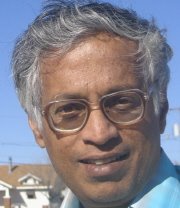The genetic clock
Dr. K.Rohiniprasad
Old age can be defined as terminal genetic illness. One of the key factors in ageing is related to telomeres. Telomeres are the DNA at the very tip of each chromosome, forming a protective cap that keeps chromosomes from fusing with other chromosomes at the tips. Fused chromosomes cannot divide and separate into daughter cells. A cell without telomeres quickly breaks down and stops functioning properly.
During the growth process, our cells reproduce and grow more cells through mitosis. This process occurs without break as some cells are replenished even as others die. In cell division all chromosomes are duplicated, DNA is replicated, new proteins are synthesized to assemble with new DNA to form new chromosomes. A telomere is a repeated strip of DNA sequence of five bases that preserves the integrity of genes during DNA replication. Telomeres stabilize the free ends of the chromosomes so that they do not fuse together. They stimulate DNA repair mechanisms. They act like the glue that prevents the ends of shoelaces unravelling. The length at birth varies from person to person but each time cells replicate daughter cells have slightly shorter telomeres than their parents. This is because cells lose a small amount of DNA following each round of replication due to the inability of DNA polymerase to fully replicate chromosome ends (telomeres).
Each time cells divide the last 50-150 base pairs of the telomere are not replicated. Telomeres shorten from 20,000 DNA base pairs at birth to below 5000. At some stage the cells 'senesce' and cannot divide again. Eventually they die from oxidative damage or DNA repair error. When functional cells continue to die in essential systems we die. Retarded replication of white blood cells caused by shorter telomeres can lead to infectious diseases. Old people with shorter telomeres may be eight times as likely to die from an infectious disease and three times more likely to suffer a fatal heart attack. However, some scientists think that shorter telomeres are just a symptom of some other process responsible for aging. Research reveals that earthworms and fruit flies get old long before their telomeres shrink significantly.
Why do cells self-destruct? This built-in "time bomb" is provided by nature because there is a conflict of interest between individual cells and organisms. Individual cells can turn cancerous and this poses a constant threat to any multi-cellular organisms like our bodies. There is a greater chance for cells to mutate into a cancer in bigger and long-lived animals. Therefore each of our body cells has a fixed number of possible divisions. However, the telomeres of the sperm and egg are extended to the correct length for the offspring with the help of an enzyme called telomerase. Here more repetitions are added at the end of the chromosome, independent of the normal system of DNA replication. Cells for repair and maintenance like the white-blood-cell-manufacturing cells also activate telomerase whenever needed. In healthy people, telomeres do not shrink significantly until old age. “Immortal” cancer cells use telomerase to overcome incomplete end-replication. On the whole, telomeres act as molecular clocks governing the process of ageing in cells. While it is not certain that shortened telomeres cause early death, cloned mammals like the sheep Dolly, have shorter telomeres than other animals of the same age and they may have shorter life-spans. Since oxidative damage can increase the rate of telomere shortening taking a good diet of antioxidants and medicines can slow down aging to some degree.
In future all this research may help scientists to ward off symptoms of old age and disease. Future technology may also disprove the inevitability of human mortality.


0 Comments:
Post a Comment
<< Home